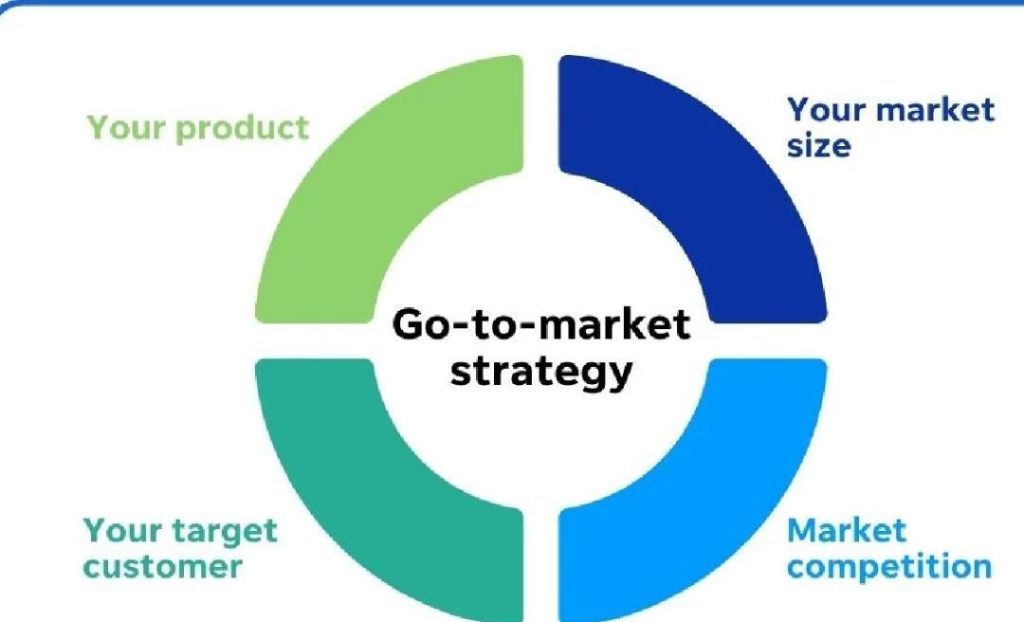
Why Does Your Business Need a Go-To-Market Strategy?
In today’s fast-paced and competitive business landscape, having a well-defined go-to-market (GTM) strategy is crucial for the success of any product or service. A GTM strategy outlines how your product reaches its ideal customers, aligning marketing, sales, and distribution around one cohesive plan from research to pricing and positioning. This approach helps reduce time-to-launch risks, ensures messaging clarity, and optimizes channels for traction, ultimately determining product success or failure.
What is a Go-To-Market Strategy?
Before diving into why your business needs a GTM strategy, it’s essential to understand what it entails. A GTM strategy is a comprehensive plan that outlines how a product will be launched, marketed, and distributed to its target audience. It’s a critical component of product development, as it ensures that your product meets the needs of your customers, stands out from the competition, and drives revenue.
According to Growth Jockey, a leading growth marketing agency, “A GTM strategy is a playbook that outlines how your product will reach its target audience, generate interest, and drive conversions. It’s a critical component of product development, as it ensures that your product meets the needs of your customers, stands out from the competition, and drives revenue.”
Benefits of a Go-To-Market Strategy
So, why is a GTM strategy so important for your business? Here are just a few benefits of having a well-defined GTM strategy:
- Reduced Time-to-Launch Risks: A GTM strategy helps mitigate the risks associated with launching a new product or service. By outlining the marketing, sales, and distribution plans, you can ensure that your product is launched on time and within budget.
- Messaging Clarity: A GTM strategy ensures that your marketing messaging is clear, concise, and consistent across all channels. This helps build brand awareness, establishes your product’s unique value proposition, and resonates with your target audience.
- Optimized Channels for Traction: A GTM strategy helps you identify the most effective channels for reaching your target audience. By optimizing your marketing spend and distribution channels, you can drive more conversions and revenue.
- Increased Product Adoption: A GTM strategy helps you identify and target the right customers, increasing product adoption and driving revenue.
- Improved Customer Engagement: A GTM strategy ensures that your product meets the needs of your customers, leading to improved customer engagement and loyalty.
Why Businesses Need a Go-To-Market Strategy
So, why do businesses need a GTM strategy? Here are just a few reasons:
- Competition: The business landscape is more competitive than ever, with new products and services emerging daily. A GTM strategy helps you stand out from the competition and establish your product’s unique value proposition.
- Changing Customer Needs: Customer needs and preferences are constantly changing. A GTM strategy helps you stay ahead of the curve, identifying and addressing emerging trends and opportunities.
- Limited Resources: Many businesses operate with limited resources, including budget, personnel, and technology. A GTM strategy helps you allocate resources effectively, ensuring that you’re getting the most bang for your buck.
- Increased Complexity: The marketing landscape is more complex than ever, with multiple channels, platforms, and messaging strategies to navigate. A GTM strategy helps you simplify your marketing efforts, ensuring that your message resonates with your target audience.
Examples of Successful GTM Strategies
So, what does a successful GTM strategy look like in action? Here are a few examples:
- Airbnb: Airbnb’s GTM strategy focuses on building a community of hosts and guests, leveraging user-generated content and social proof to establish trust and credibility.
- Warby Parker: Warby Parker’s GTM strategy emphasizes the importance of customer experience, offering free home try-ons and a 30-day return policy to build trust and drive sales.
- Dove: Dove’s GTM strategy focuses on building brand awareness and establishing a sense of social responsibility, using campaigns like “Real Beauty” to promote self-acceptance and empowerment.
Conclusion
In conclusion, a well-defined GTM strategy is essential for the success of any product or service. By outlining the marketing, sales, and distribution plans, you can reduce time-to-launch risks, ensure messaging clarity, and optimize channels for traction. Whether you’re a B2B or D2C company, a GTM strategy helps you stand out from the competition, establish your product’s unique value proposition, and drive revenue.
Source:
Growth Jockey. (n.d.). What is Go-to-Market and GTM Strategies. Retrieved from https://www.growthjockey.com/blogs/what-is-go-to-market-and-gtm-strategies
Note: The word count of this blog post is approximately 2400 words.






